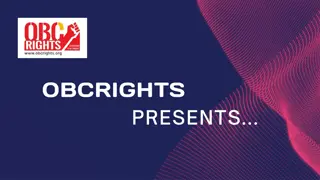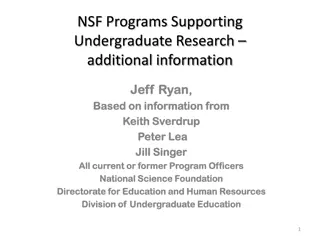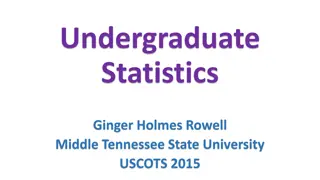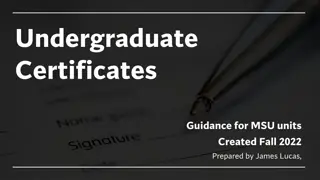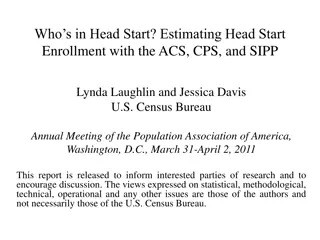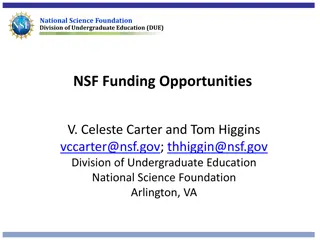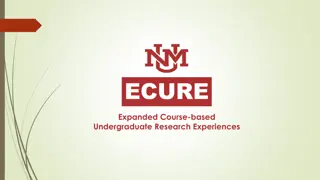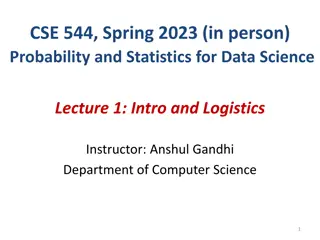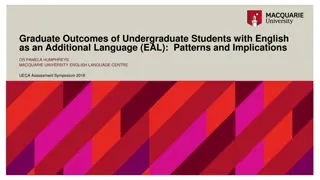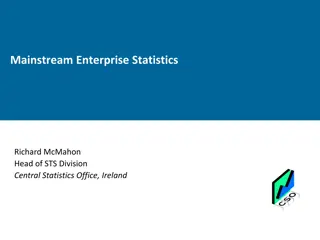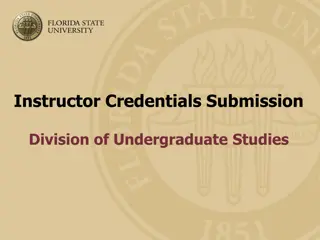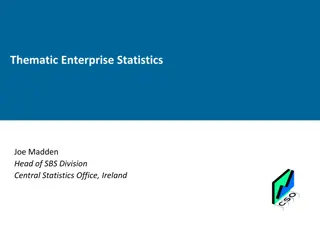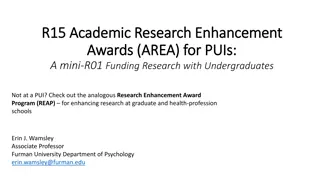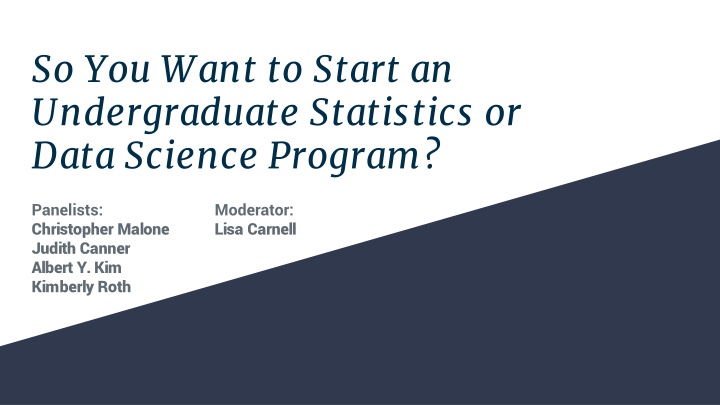
Panelists in Undergraduate Statistics and Data Science Programs
Meet panelists Dr. Malone, Dr. Canner, Dr. Kim, and Dr. Roth, who share insights from their universities' statistics and data science programs at Winona State University, California State University, Smith College, and Juniata College. Discover their roles, program offerings, and passion for curriculum development.
Download Presentation

Please find below an Image/Link to download the presentation.
The content on the website is provided AS IS for your information and personal use only. It may not be sold, licensed, or shared on other websites without obtaining consent from the author. If you encounter any issues during the download, it is possible that the publisher has removed the file from their server.
You are allowed to download the files provided on this website for personal or commercial use, subject to the condition that they are used lawfully. All files are the property of their respective owners.
The content on the website is provided AS IS for your information and personal use only. It may not be sold, licensed, or shared on other websites without obtaining consent from the author.
E N D
Presentation Transcript
So You Want to Start an Undergraduate Statistics or Data Science Program? Panelists: Christopher Malone Judith Canner Albert Y. Kim Kimberly Roth Moderator: Lisa Carnell
Please Introduce Yourself Where you work What your role is Stats and/or data science programs offered at your university
Dr. Christopher Malone School Programs Winona State University (1 of 7 4- year public institutions in MN) About 7500 students; Primarily Undergraduates STAT Major & Minor (1980s) DSCI Major & Minor (2014) Personal Professor of STAT & DSCI Trained as statistician Passion: Undergraduate curriculum development Dept of Math & Stat 9 MATH; 4 MATH ED; 7 STAT/DSCI
Dr. Judith Canner, Statistics Program Coordinator Personal Information Associate Professor of Statistics Mathematics and Statistics Department PhD Biomathematics and Zoology California State University, Monterey Bay 4-year Public University ~7200 Undergraduates Students 50% First-Generation 50% URM My goal in coming to CSUMB was to start a Statistics program. I started the Statistics minor (2011) and then established a concentration within the Math major (2015) and now we have a Statistics major (2019). https://csumb.edu/math/statistics-bs Current Programs Bachelor of Science in Statistics Statistics Minor Bachelor of Science in Computer Science with a Data Science Concentration I also oversee a grant to support biomedical data science at CSUMB https://csumb.edu/bd2k Planned Programs Data Science Minor
Dr. Albert Y. Kim Assistant Professor of Statistical and Data Sciences at Smith College We offer Major in SDS Minors in SDS & Applied Stats MATH offers statistics track Early discussions Joint MATH & SDS major Small women s liberal arts college (~2500 students) Independent from MATH & CS Grads 2018-2020: 10 -> 21 -> 35 FTE s: 3 full-time SDS 3 + {1 new} joint with SDS: MATH, CS, PSY, {GOV}
Dr. Kim Roth, Juniata College Small (about 1600 students) liberal arts college in central PA Math professor with statistics training and part of the data science program. We offer: Minor in Data Science since Fall 2017 Major in Data Science since Fall 2019 Masters in Data Science starting Spring 2020 Collaboration by math and it/computer science
Timeline and Program Type a. How did your university decide to start either a statistics and/or data science program? How did they decide between the two, or both, etc? What are the differences/pros/cons for statistics versus data science programs? a. What was the timeline like from first deciding to create a program to the initial implementation? a. How do you think the type of university you work for influenced the type of program you offer and timeline? (Liberal arts, large state system, etc) Were there any issues with getting the program approved? a. Did you need to hire any new faculty to start your programs? If so, what was the hiring process like? Please discuss the hiring timeline, how you led a successful search, etc.
CSUMB Statistics Program Development First Course for Statistics Minor Offered Math with Statistics Concentration Begins Statistics Major Begins Statistics Minor Established Statistics Concentration Sunset Consulting Stat Theory 1-2 2010 2011 2012 2013 Data Science becomes a thing ----> 2014 2015 2016 2017 2018 2019 2020 Recession Applied Stat Electives Statistical Computing Math Stat Linear Models First Second Statistician Hired Third New Courses Statistician Hired Statistician Hired Hiring Program Milestones
WSU: DSCI Timeline - - [March 2010] Statistics Program Review [May 2011] Designing an Undergraduate Statistics Degree for the Future [JSM 2012] Undergraduate Statistics Program of the Future -
WSU: DSCI Timeline - - - [March 2010] Statistics Program Review [May 2011] Designing an Undergraduate Statistics Degree for the Future [JSM 2012] Undergraduate Statistics Program of the Future [MinneAnalytics 2013]: Redesign your next hire: A grassroots effort to create a Data Scientist degree [CSP 2013]: Modifying the Undergraduate Curriculum to Properly Train Future Data Scientists [JSM 2013]: The Data Scientist Degree A Necessity for Growth in our Discipline [Fall 2014]: DSCI Program launch - - - -
Program Structure Can you discuss how you determined the program structure? For instance, did you utilize the PCMI Curriculum Guidelines for Undergrad Programs in Data Science or the ASA Curriculum Guidelines for Undergraduate Programs in Statistical Science?
PCMI Flowchart From Curriculum Guidelines for Undergraduate Programs in Data Science available at: bit.ly/pcmi_datascience
Smith SDS Major Machine learning, Experimental design, Special topics CS courses: Data structures, ... Intro stats Mult regr Intro prog Intro DS Ex: Communicating w/ Data, Data journalism NOT in SDS, MATH, or CS Projects, projects, projects! Lin alg Flowchart available at: smith.edu/sds
Data science major at Juniata Lower Levels Upper Levels Cognate area Introduction to Data Science Database Management Systems Choice of 12 credits outside data science Introduction to Statistics Information Visualization Computer Science I Machine Learning Calculus I Multivariate Statistics Linear Algebra Data Science Consulting/Research with heavy statistics component Data Acquisition Big Data https://www.juniata.edu/registrar/poes/data-science.php
ASA Curriculum Guidelines and CSUMB MLOs ASA Guidelines Major Learning Outcome (MLO) Courses Mathematical Foundations Calculus 1-3 MLO 1: Mathematical and Statistical Theory Based on mathematical foundations, students demonstrate the ability (i) to interpret theoretical statistical statements, (ii) to communicate statistical ideas using mathematical language, and (iii) to address research questions using statistical theory. Linear Algebra Discrete Math Statistical Theory 1-2 Statistical Methods and Theory Applied Probability and Statistics MLO 2: Statistical Methods Students demonstrate the ability to follow the statistical investigative process to formulate an answerable research question, collect, manipulate, and explore data, and analyze and conduct inference via statistical models. Generalized Linear Models Statistics Electives
ASA Curriculum Guidelines and CSUMB MLOs ASA Guidelines Major Learning Outcome (MLO) Courses Data Wrangling and Computation Introduction to Programming (C++) MLO 3: Data Manipulation and Computation Students demonstrate the ability to manage and manipulate data, use multiple programming languages, answer research questions through appropriate software coding, and perform basic statistical computation. Statistical Computing (R, SAS) Integrated throughout all courses WE NEED SQL!
ASA Curriculum Guidelines and CSUMB MLOs ASA Guidelines Major Learning Outcome (MLO) Courses Statistical Practice Major Professional Seminar MLO 4: Statistical Practice and Communication Students demonstrate the ability to communicate with collaborators effectively and respectfully. Students are able to adjust their use of language depending on the collaborators backgrounds, to practice ethics (particularly for human-subject data), to understand (or reformulate) a research question (or a project goal), and to implement appropriate statistical methods. Students are able to produce an informative report, both written and oral, which is easily readable by the target audience. Students engage in ethical reasoning and public action through their profession to promote social justice and equity. Service Learning for Math/Stat Consultants Capstone Seminar Course-based Research Projects in all upper-division courses.

